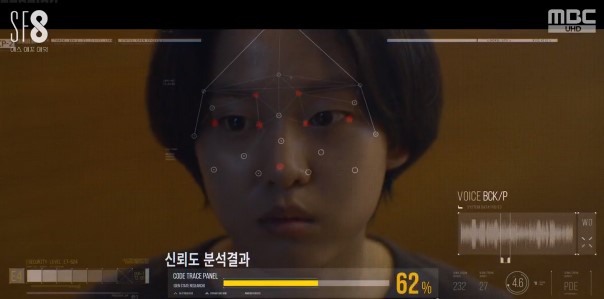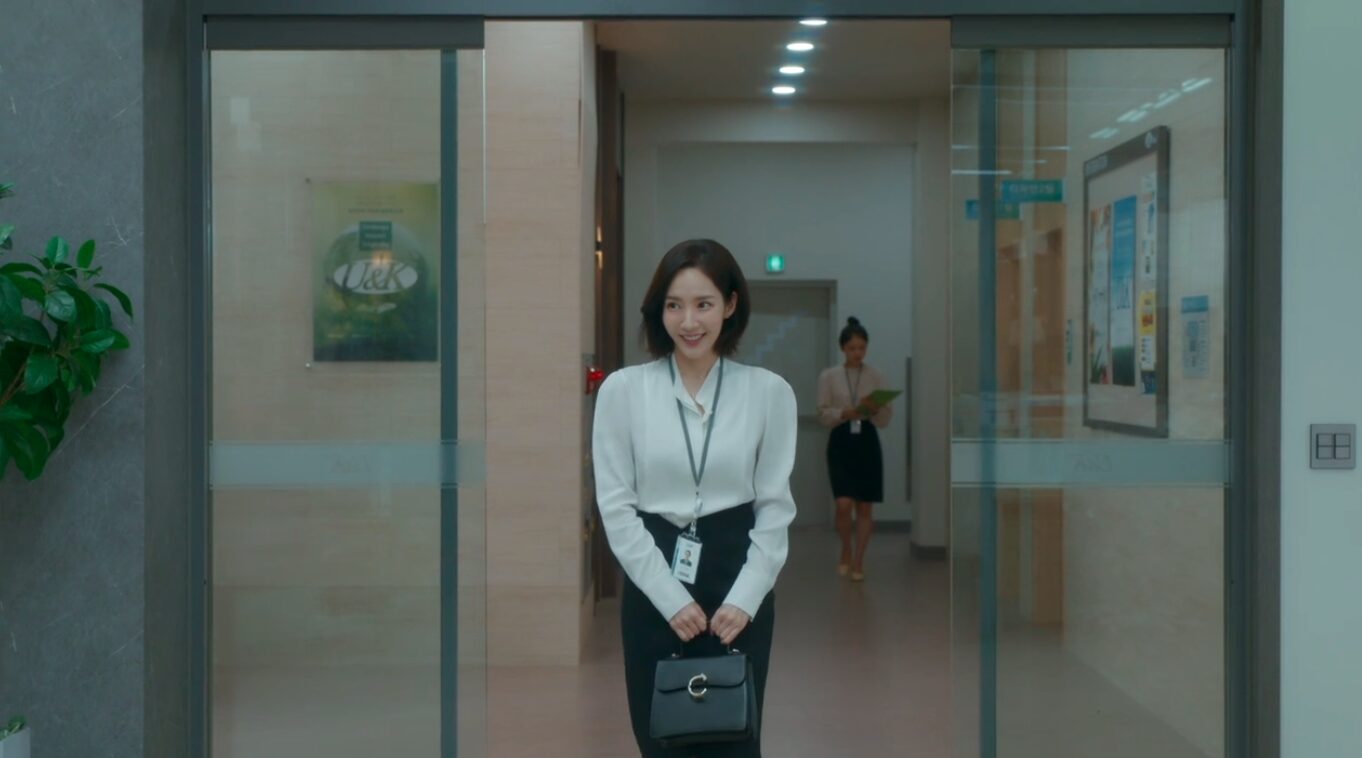SF8’s fourth story is a fun ride that offers insight into Korea’s portrayal of technology as a social good
In the 2020 Netflix drama, My Holo Love, a young woman with prosopagnosia falls in love with a hologram that helps her survive and thrive in the cutthroat world of the Korean workplace. Unbeknownst to her she is being monitored by the hologram’s creator who sits in a dark room observing her in real time.
Is this a romantic comedy or a horror film? A lightweight piece of fun or a psychological thriller? Well, like most portrayals of technology in Korean film and television, the answer to that question depends on your cultural perspective.
For the average Western viewer such as myself, the CEO’s behaviour My Holo Love is creepy at best and criminal at worst. But My Holo Love is marketed as an uplifting romance. The female lead So-yeon, we are told, has a deep need to be known and understood. And who could fulfil this more than a man who has been basically stalking her? Possibly the AI that hacked all her devices.

My Holo Love is not alone in its portrayal of technology. In both the 2017 romantic comedy, I’m Not a Robot, and the 2020 discussion of grief, A Piece of Your Mind, the benefits of the therapeutic technologies being developed are seen to outweigh any ethical or privacy violations. The shows even normalise the use of technology to record or observe a person without their consent. The way in which technology is portrayed across Korean crime dramas is similar. Those cameras tracking everything you do? They’re for the good of society.
All these shows reflect an embedded Korean techno-optimism that says technology is an almost unqualified social good. The benefits we gain in law enforcement, medicine, or social interactions are many. The drawbacks are almost irrelevant.
This year’s groundbreaking science fiction anthology, SF8, has reflected this technological optimism across its episodes. Whereas its British counterpart Black Mirror often uses technology to explore dystopias, Korean techno-optimism suffuses every aspect of SF8.
From its life-giving vaccines and protective suits in Joan’s Galaxy to its benign Big Brother AI in Manxin, technology is universally beneficial in the universes created by SF8. That techno-optimism is most evident in the anthology’s fourth episode, Blink; a fun if somewhat one-dimensional episode about a cop who gets a virtual partner.

The Plot
Kim Ji-woo (Lee Shi-young) is a police officer in a future Seoul where artificial intelligence is procedurally embedded in law enforcement. Following a car accident involving an autonomous vehicle when she was young, she’s a technological skeptic and regularly refuses to follow the instructions and advice of the intelligence she’s given. After an incident where she loses a suspect by ignoring her tactical feed, she’s given access to Seo Nang (Ha Joon); a prototype artificial ‘partner’ implanted in her brain.

Seo Nang can access her visual and auditory cortex; creating an image of a partner that only she can see and hear. As she investigates a mysterious murder that may involve similar technology, she has to find a way to work with her new ‘partner’ and overcome her trauma over her parents’ deaths.
In execution, Blink is more like a pilot episode to a television show than a standalone piece. A buddy-cop drama with a technological twist, it’s an enjoyable watch that would make a great ongoing episodic show.

Lee Shi-young is known for her martial arts skills and has regularly drawn on them for previous roles. In Blink she’s ripped almost beyond recognition and perfectly embodies a tough-as-nails cop who has trouble drawing within the lines. Her relationship with her new partner starts off with distrust and banter and builds to respect and the pace is fast and fun. What it lacks in depth it makes up for in action.
Consent? What is this ‘consent’ of which you speak?
Blink’s appeal is that it’s a fun and well-executed crime drama with a lot of potential to be more. But while it is slightly too straightforward for an anthology of this type, Blink becomes more interesting when viewed through the lens of Korea’s techno-optimism.

The rather worrying fact about Blink is that Kim Ji-woo never consents to having Seo Nang implanted in her brain. Not only that but she isn’t even told the AI will be uploaded. In a disturbing scene at the beginning of the episode, we see her flailing – disoriented, confused and asking for help – as her superiors upload the experimental program into her brain without discussing it first.
Ji-woo is a guinea pig; a human test subject for a technological prototype that can access and amend her brain functions. Her disciplinary problems are seen as sufficient for her to be forced into the role; when she asks for the AI to be removed she’s essentially told she has no choice. If she wants it removed, she has to solve a case with it first. For all of her badass asskickery, Ji-woo’s bodily autonomy is overwritten in a matter of seconds by her male superiors.

While this adds to Ji-woo’s general antagonism to technology, it’s never addressed as an ethical problem. Her response isn’t seem as a valid and natural reaction to the violation. If anything it’s framed as part of her aversion to technology generally. And this, like her trauma over the car accident, is something the episode tells us she needs to get over.
Technology as a social good
Techno-optimism in Blink manifests in three main ways: as a physical augmentation, as a means to protect society through improved law enforcement, and as a therapeutic tool. Working with Seo Nang gives Ji-woo a tactical advantage and enables her to be a better cop. But it also helps her to overcome her childhood trauma and relinquish control finally to the technology that could help her perform better.
Ji-woo’s interactions with Seo Nang throughout the episode portray a beneficial merger of humanity and technology. He provides advice and expertise in more areas than she could hope to master by herself, she makes decisions using her superior experience at life. He also enables her to fight criminals who have similar virtual enhancements. They are – human and machine – perfect partners.
In the end, Ji-woo doesn’t just come to terms with her grief, she accepts the benefits of technological enhancement. The episode ends with her breaking into the storage facility where Seo Nang’s program has been mothballed and reinstalling him. Ji-woo is now permanently augmented and this time it’s something she chose.
I guess she felt that her life with technology was just better.





2 thoughts on “Korea’s Technological Optimism: SF8 Blink”